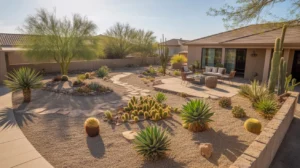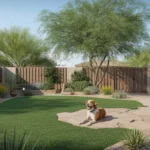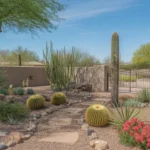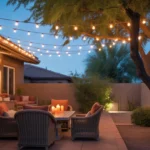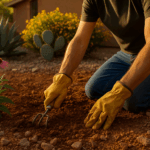As summer temperatures soar in Mesa, maintaining a traditional grass lawn can feel like an uphill battle. Between relentless heat, limited water resources, and high maintenance demands, many homeowners are seeking smarter alternatives to turf. Fortunately, there are plenty of creative ways to outwit the heat and cultivate a stunning, desert-adapted yard without relying on thirsty grass. Let’s explore some practical lawn alternatives that can transform your Mesa hot zones into an oasis of beauty and resilience.
Embrace Xeriscaping Principles
Xeriscaping, derived from the Greek word “xeros” meaning dry, is a landscaping approach that prioritizes water conservation and drought-tolerant plants. By embracing xeriscaping principles, you can create a yard that thrives in Mesa’s arid climate while minimizing water usage. The key is to select native and desert-adapted plants that have evolved to withstand the intense heat and limited rainfall of the Sonoran Desert.
When planning your xeriscape, consider incorporating a mix of cacti, succulents, and low-water perennials. Agave, yucca, prickly pear, and ocotillo are just a few examples of striking desert plants that add architectural interest and require minimal irrigation. Pair these with drought-tolerant shrubs like Texas sage, desert spoon, and brittlebush for a diverse and visually appealing landscape. Remember to group plants with similar water needs together to optimize irrigation efficiency.
In addition to plant selection, xeriscaping emphasizes the use of efficient irrigation systems, such as drip irrigation or low-flow emitters, to deliver water directly to the root zone. Mulching with organic materials or decorative gravel helps retain soil moisture, suppress weeds, and regulate soil temperature. By implementing these water-wise strategies, you can create a beautiful and sustainable yard that thrives in Mesa’s hot zones.
Opt for Groundcovers and Low-Growing Plants
If you’re looking for a low-maintenance alternative to traditional grass, consider incorporating groundcovers and low-growing plants into your landscape. These versatile options provide a carpet of foliage that can tolerate foot traffic, suppress weeds, and add visual interest to your yard. Many groundcovers are also drought-tolerant, making them well-suited for Mesa’s hot and dry climate.
One excellent option is trailing rosemary (Rosmarinus officinalis ‘Prostratus’), a hardy evergreen with fragrant, needle-like leaves and delicate blue flowers. This groundcover thrives in full sun and well-draining soil, making it a perfect choice for Mesa’s hot zones. Another low-water option is Damianita (Chrysactinia mexicana), a mounding perennial with bright yellow flowers that bloom from spring to fall. Its fine-textured foliage and compact growth habit make it an attractive lawn substitute.
For a native groundcover that can handle light foot traffic, consider planting Blackfoot daisy (Melampodium leucanthum). This low-growing perennial forms a dense mat of dark green foliage and produces charming white flowers with yellow centers. It’s highly drought-tolerant and requires minimal maintenance once established. By incorporating a tapestry of groundcovers and low-growing plants, you can create a lush and inviting yard that requires far less water and upkeep than a traditional lawn.
Create Inviting Hardscapes and Gathering Spaces
Another effective strategy for reducing lawn area is to incorporate well-designed hardscapes and outdoor living spaces into your landscape. By replacing grass with permeable pavers, flagstone, or decomposed granite, you can create functional and visually appealing areas for dining, entertaining, or simply relaxing. These hardscape elements not only reduce water consumption but also add value and usability to your outdoor space.
When planning your hardscape design, consider the flow and functionality of your yard. Create meandering paths that lead to cozy seating areas, intimate courtyards, or inviting fire pits. Use a mix of materials and textures to add visual interest and define distinct zones within your landscape. For example, you might pair smooth concrete pavers with rustic stone walls or combine sleek metal furnishings with warm wood accents.
To soften the edges of your hardscapes and provide shade, incorporate desert-adapted trees and shrubs along the perimeter. Palo verde, mesquite, and desert willow are excellent choices that offer filtered shade and seasonal interest. By strategically placing these plants, you can create a microclimate that helps cool your outdoor living areas and provides respite from the intense Mesa sun. With thoughtful hardscape design and selective planting, you can transform your hot zones into inviting spaces that require minimal water and maintenance.
Experiment with Desert-Wise Lawn Alternatives
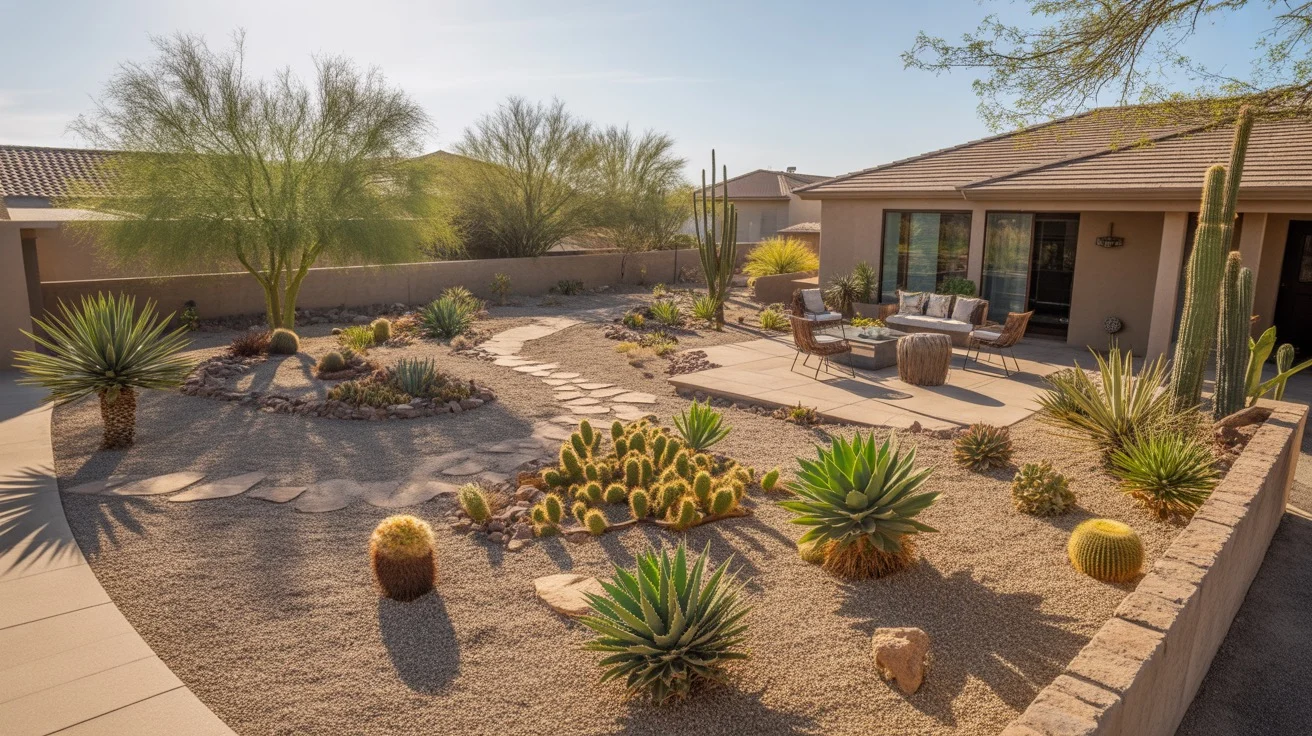
If you still crave the look and feel of a lawn but want to reduce water usage, consider experimenting with desert-wise lawn alternatives. These innovative options mimic the appearance of grass while requiring significantly less irrigation and upkeep. One popular choice is Kurapia (Lippia nodiflora), a low-growing groundcover with a dense, grass-like appearance. Kurapia is highly drought-tolerant, can handle moderate foot traffic, and stays green year-round with minimal watering.
Another intriguing alternative is Habiturf, a mix of native grasses developed by the Lady Bird Johnson Wildflower Center. This blend of blue grama, buffalograss, and curly mesquite creates a resilient, low-water lawn that can withstand the challenges of Mesa’s hot zones. Habiturf requires less frequent mowing and fertilizing than traditional turf grass, making it a more sustainable and low-maintenance option.
For a truly unique and eye-catching lawn substitute, consider planting a tapestry of succulents. Sedums, echeverias, and other low-growing succulents can be arranged in intricate patterns to create a living mosaic that requires minimal water and care. These fleshy-leaved plants come in a wide range of colors, textures, and forms, allowing you to design a one-of-a-kind “lawn” that is both drought-tolerant and visually stunning. By embracing these innovative lawn alternatives, you can create a yard that is both beautiful and well-adapted to Mesa’s hot and arid climate.
Collaborate with Local Landscaping Experts
Transforming your Mesa hot zones into a desert-wise oasis can be an exciting and rewarding process, but it’s essential to approach it with knowledge and careful planning. Collaborating with local landscaping experts who specialize in xeriscaping and water-wise design can help you make informed decisions and avoid costly mistakes. These professionals have in-depth knowledge of the Sonoran Desert ecosystem and can guide you in selecting the right plants, materials, and irrigation systems for your specific site conditions.
When choosing a landscaping partner, look for companies or designers who prioritize sustainability, water conservation, and the use of native plants. They should have a proven track record of creating beautiful, resilient landscapes that thrive in Mesa’s challenging climate. A skilled designer will take the time to understand your unique vision, lifestyle, and maintenance preferences, crafting a customized plan that meets your needs and enhances your property’s value.
In addition to design expertise, a knowledgeable landscaping team can provide valuable insights on soil preparation, grading, and drainage—all critical factors in the success of your lawn alternatives. They can also recommend efficient irrigation solutions, such as smart controllers and moisture sensors, to optimize water usage and ensure the health of your plants. By collaborating with local professionals, you can create a stunning, sustainable yard that outwits the heat and provides year-round enjoyment.
As you embark on your journey to transform your Mesa hot zones with lawn alternatives, remember that the process is an opportunity to create a yard that is both beautiful and resilient. By embracing xeriscaping principles, incorporating groundcovers and low-growing plants, creating inviting hardscapes, experimenting with innovative lawn substitutes, and collaborating with local experts, you can outwit the heat and cultivate an outdoor space that thrives in harmony with the Sonoran Desert. Your water-wise and desert-adapted landscape will not only save resources but also provide a serene and inviting haven for you and your family to enjoy for years to come.

